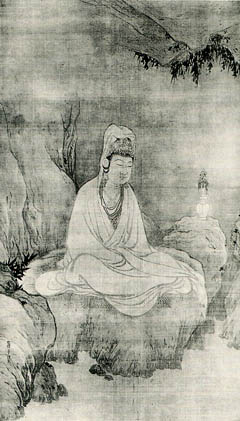Transition & Turmoil
Whenever a religion enters a new region dominated by an ethnic culture differing from that of its originating source, a certain amalgamation of ideologies, ethicalities, as well as prevailing myths and superstitions of the newly introduced religion and the antecedent religions takes place. Buddhism is an especially interesting case, as it has spread world wide and taken on many different flavors ...
A master serves several functions in a sangha: as a teacher and resource for practicing students, as a guide or "coach", as a leader or co-leader of ceremonies, as a disciplinarian, and often as an administrator. In addition, a master is usually responsible for the financial health of the temple, the spiritual health of the temple's constituency, maintaining a healthy public image in the ...
Many people equate Zen training with gong-an (koan) study due to the fairly frequent use of this teaching technique in Zen monasteries. Koans are one of many different techniques that teachers have used over the centuries to help students break through the rigid mental framework that obscures the higher domain of Self. In China, the use of the gong-an dropped as teachers began to recognize that ...
The context in which we view a thing has a great influence on our perception of it. It is a great influence on our perception of Zen.When we first learn about something it's with our senses and we know all too well that they can mislead, tricking us to believe that things are one way when they are, in fact, another. We enter a Buddhist temple and see a giant statue of the Buddha, smell the fine ...
While most of the world's great religions rely on the sanctity of words to convey the Truth of their religious doctrines, moral codes, etc., Zen Buddhism makes no such claim as it has no such written document or collection of documents. Instead, Zen Buddhism relies on the concept of Dharma Transmission to "preserve" the teachings of the Buddha. We conceive that the nature of Ultimate Reality is ...






